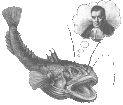UW Aquatic & Fishery Sciences Quantitative Seminar
Lewis Barnett
School of Aquatic & Fishery Sciences, University of Washington and Fishery Resource Analysis and Monitoring Division, Northwest Fisheries Science Center
Ecological sensitivity to environmental variation depends on the trophic distribution of fishing and climate impacts
Abstract
Understanding how environmental variability propagates through food webs is essential to improving ecosystem-based management in a changing climate. Analyses of single-species models indicate that harvesting populations can increase population sensitivity to environmental change. However, from an ecosystem perspective it is unknown whether this harvest-induced sensitivity will propagate through species interactions in a food web, including how this might depend on which trophic levels are directly impacted by fishing and the environment. To assess how the frequency and magnitude of variance in population and harvest dynamics depend on harvest rate and whether the environmental variation originates as a "top-down" or "bottom-up" forcing, we developed an age- and size-structured predator-prey model with environmental variation in growth and survival, using Pacific hake and their forage fish prey in the eastern North Pacific as a case study. Although the two types of forcings differed little in the frequency response they elicited in predator egg production and catch (i.e., the pattern of population sensitivity to environmental variation at each time scale), bottom-up forcings generated a greater magnitude of variance in populations than did top-down forcings. When both predator and prey were fished, the total variance in the predator's dynamics was more sensitive to the harvest rate of the prey than of the predator, particularly given a bottom-up forcing. Under most conditions there was no tradeoff between the mean and relative variance of catch, but bottom-up forcings introduced a tradeoff between these metrics in the catch of the predator. These results highlight how coordinating harvest across trophic levels can increase the multispecies catch while also dampening the sensitivity of catch to environmental variation.

